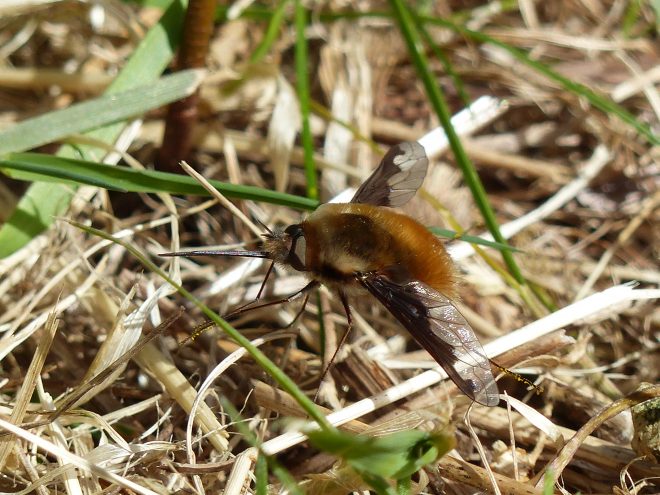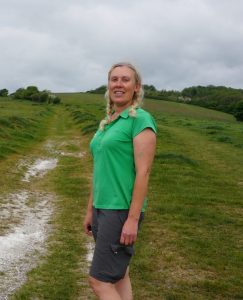South Downs species: the narwhal of insects
February 8, 2023
Every month our Biodiversity Officer Jan Knowlson will be sharing her knowledge of some remarkable species you may see out and about as you explore the South Downs National Park. This month she shines a light on the bee-fly.

Dark-edged bee-fly Bombylius major
Habitat…
Woodland, farmland, heathland and calcareous grassland, as well as gardens and parks. You can often see them in good numbers near bare ground at the edge of paths, looking for solitary bee nests. I once got quite absorbed with a large number on the edge of the South Downs Way car park at Bo Peep!
Key features…
Bee-flies look rather like bees but are actually true flies. Its high-pitched hum may catch your attention before you see it. Having pupated over winter, dark-edged bee-flies usually start to appear in March, but people sometimes report sightings as early as mid-February. When they aren’t buzzing from flower to flower, these sunseekers will often sunbathe on bare ground or dead leaves.
Often described as a “flying narwhal” because of its very long, straw-like tongue. In total, 10 bee-fly species live in the UK but the dark-edged is the most common. In the South Downs we also get the dotted bee fly Bombylius discolor.

Fun fact…
Bee-flies lay their eggs in the underground nests of solitary bees, dusting their eggs in the dirt before “flinging” them into the entrance of the nest. Once hatched the bee-fly larva then predate on the bee larva within!
Likes to eat…
The bee-fly uses its long proboscis to feed on nectar from spring flowers, such as primroses and violets.
Ecological importance…
Like bees, adult bee-flies are great pollinators, helping to maintain the diversity of plants and flowers, which in turn helps to provide food for wildlife and humans.
Conservation status…
Common
When and where to see…
From February to May at one of the woods, heaths, or farmland settings in the National Park.
Be sure to share your images of them @sdpna #SouthDownsNationalPark
Record them on Bee-fly Watch to help monitor the species and its distribution!
Picture by Elinor Newman
